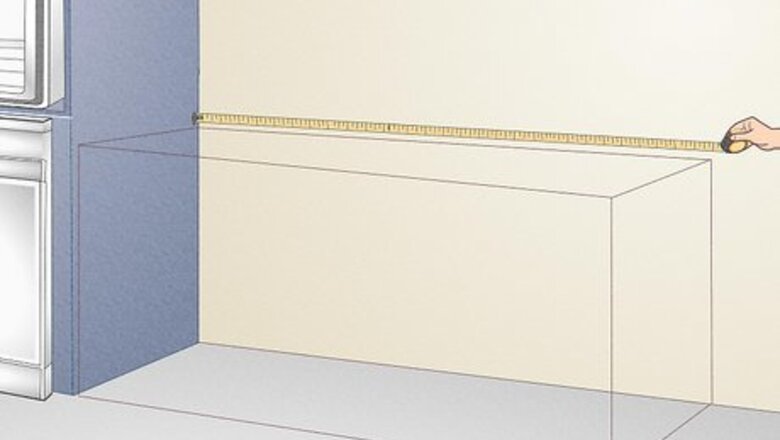
views
- Choose the dimensions of your cabinets based on the space you have to install them.
- Cut your pieces out of 3/4 inch plywood sheets. Use a track saw or a circular saw for the initial cuts, then use a table saw for your finishing cuts.
- Start by making a cabinet carcass to hold your pieces together.
- Finish the cabinet by adding shelves and a face frame before installing the doors.
Planning the Project
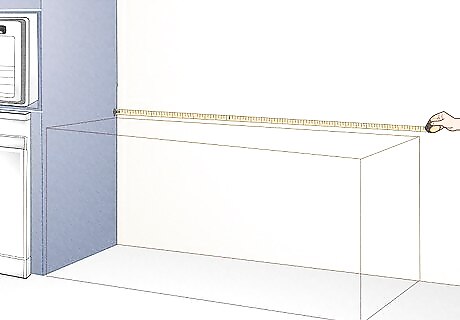
Measure the space where the cabinets will go. Your cabinets may differ slightly depending on where you’re installing them. Grab a tape measure and write down the height, width, and depth of the space that you’re going to put your cabinets. Focus on building for convenience instead of aesthetic appeal. Make sure the cabinets fit your space and store things within your reach. Try to build with manufactured wood, which is easier to use than solid wood.
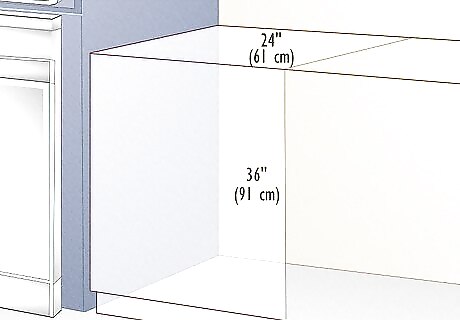
Decide on the dimensions of each cabinet. Standard cabinets are about 36 in (91 cm) tall, including countertops. The depth is typically around 24 in (61 cm), unless you’re building upper cabinets, in which case the depth is around 12 in (30 cm). Most cabinets sit on top of toe kicks that are 4 in (10 cm) tall and set in about 3 in (7.6 cm) from the front of the cabinet. You can adjust these measurements slightly to fit your space if you need to. This is your project, so pick the dimensions that work best for your space. If you'd like to save time, look into flat pack options. These contain pre-cut and drilled cabinet pieces that only require assembly.
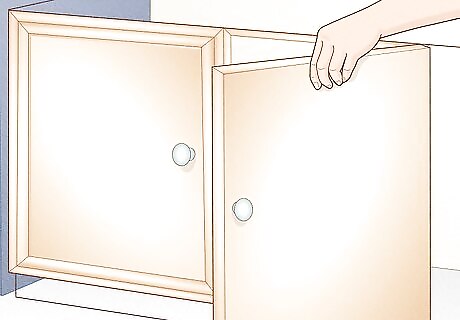
Choose between faceless and face frame cabinets. Cabinets with a face frame are a bit more traditional. They have a wooden “frame” around the doors that provide an aesthetically pleasing finish to the cabinet. Faceless cabinets don’t have this frame, and are generally easier to make for beginners. If you’re going to build cabinets with a face frame, prepare to buy a little extra wood and spend a little extra time on this project. Faceless cabinets are also called European cabinets.
Cutting Pieces
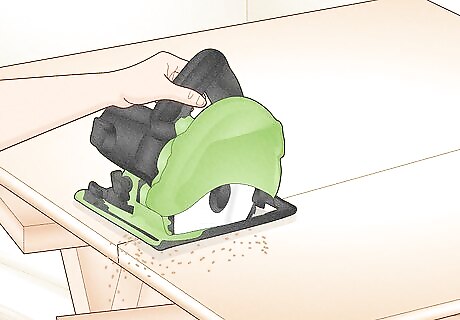
Cut 3/4 inch plywood into manageable pieces. The majority of the cabinet is going to be built using plywood. Head to your local hardware store and pick up some 3/4 inch plywood sheets, then use a circular saw or a track saw to cut them down into 23 in (58 cm) wide strips. If you’re using a circular saw, make sure you have a straight edge to act as a guide as you cut through your pieces. Always wear gloves, safety goggles, and ear plugs when using power tools. If you have long hair, tie it up so it doesn’t get caught in your tools.
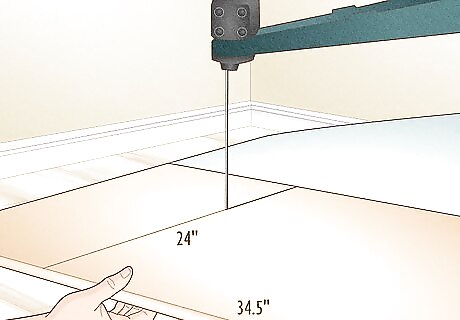
Cut 34.5 in x 24 in panels for the sides of the cabinet. Cut out the side pieces out of 3/4" MDF, plywood, or an appropriate type of laminate using a band saw. As the sides will not be seen, the material appearance does not matter, only the strength and durability. These panels will be 34.5" high and 24" wide. If you’re making upper or wall cabinets, the measurements should reflect your personal tastes. Standard depth is around 12-14". Height depends on how tall you want them to be and how high your ceilings are. If you adjusted the measurements or your cabinets are a non-standard size, use your own size guidelines instead of the measurements provided here.
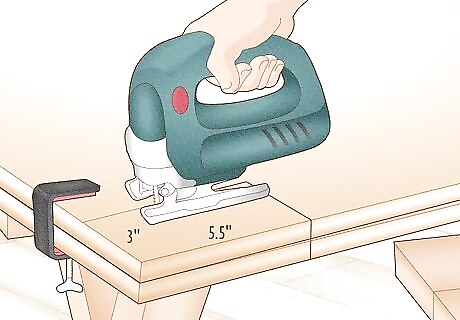
Use a jigsaw to cut a toe kick into 1 corner. Clamp the two panels that you just cut together and then use a jigsaw to cut a 3x5.5" toe-kick in one corner of the panels. This will be your bottom front corner. If you are making upper cabinets, skip this step. You don’t need a toe kick for upper cabinets.
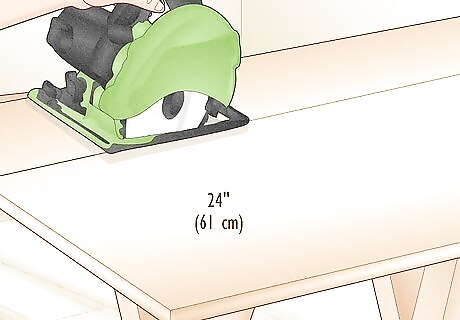
Cut the bottom piece 24 in (61 cm) deep. The bottom piece of your cabinet is dictated by the dimensions of your kitchen. Standard cabinets are 24 in (61 cm) deep, but the width depends on where you’re putting the cabinet. Once you’ve cut it to the right depth, cut the width as well. Again, for wall cabinets, the depth will be somewhere between 12-14", not 24". Cut 2 of these pieces per cabinet for wall cabinets.
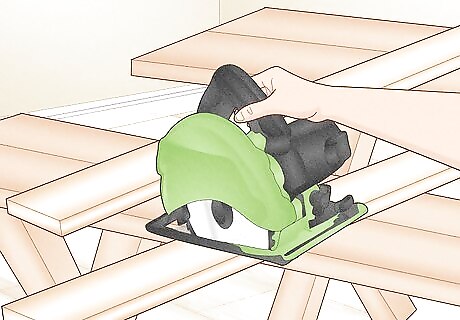
Cut the front and back base panels. Use 1x6 lumber and cut 2 pieces to the width that you cut your bottom panel. If you’re making wall cabinets, you can skip this step.
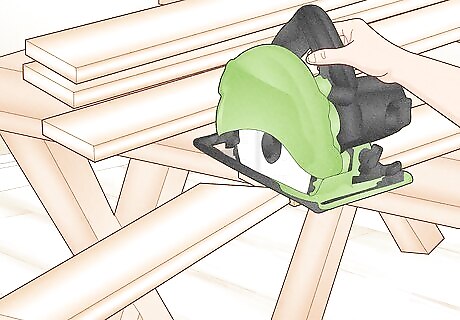
Cut the top brace panels. Cut 2 more pieces at the same width to hold the top ends together. Skip this step if you’re making wall cabinets.
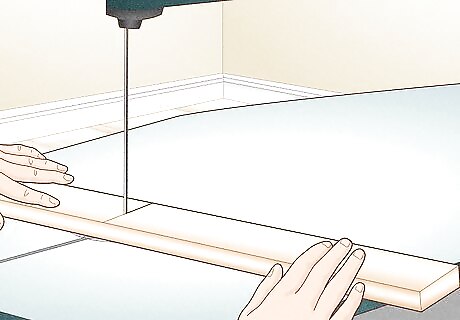
Cut the facing panels out of dimensional lumber. The facing panels will be assembled like a picture frame and will be the main part of the cabinets that show. Since this is the case, you will want to use dimensional lumber in a wood that appeals to you in order to make these panels. Use your table saw to cut wood that will fit the dimensions of the front of your cabinet. Good sizes to use, depending on the part of the face and the style you want, include 1x2, 1x3, and 1x4. Since these pieces are like a “frame,” cut 2 pieces for the height of the cabinet and 2 pieces for the width of the cabinet.
Assembling the Cabinet Base
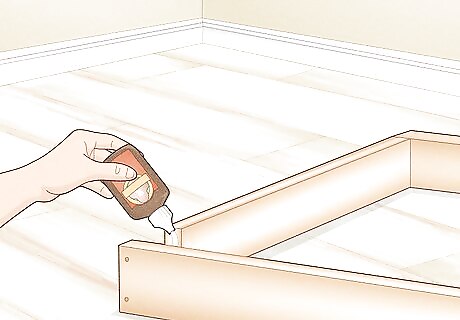
Join the base panels to the bottom structure. Align and glue the base panels so that one flat face is flush with the back edge of the panel and the other is 3 in (7.6 cm) back from the front end. Then, using butt joints, screw through the cabinet base and into the edge of the panels. Pilot holes are a good idea here. Butt joints are easy joints to make, even for beginning woodworkers. All you have to do is join your pieces together so they butt up against one another and sit flush with each other. Using wood glue isn’t strictly necessary here, but it’s a nice way to reinforce the joints and keep your pieces together.
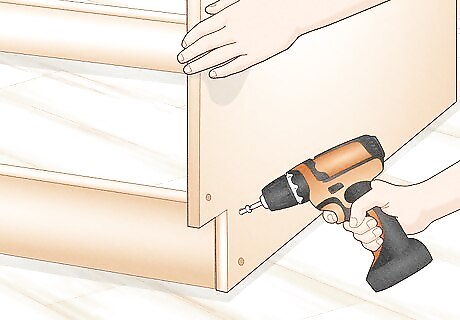
Join the sides to the bottom piece. Glue and then secure (again with butt joints) the side panels to the base and bottom structure, fitting the toe-kick in with the gap you made. Make sure all of the edges are flush. To be sure that all the edges are flush, use clamps to hold your pieces in place, then use an angle measuring tool to measure each angle.
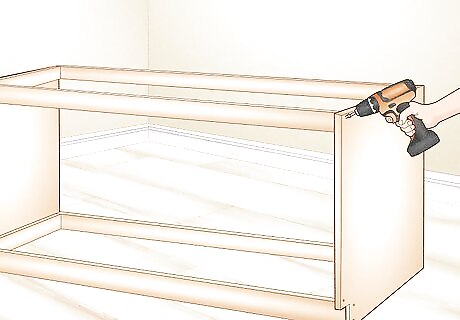
Secure the top brace panels. Next glue and secure (with butt joints) the back brace panel so that it will sit flat against the wall. Place the front brace panel so that it will sit flush with the countertop once the countertop is placed.
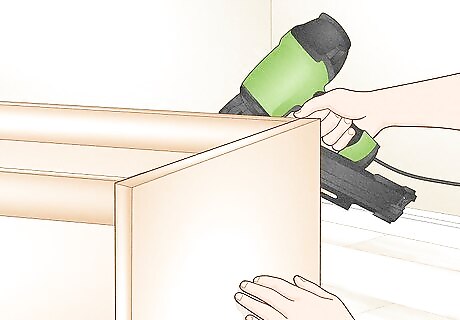
Nail on a back panel. Use a nail gun to attach a 1/2" plywood back panel. A thicker back panel will be needed for wall cabinets, like 3/4" MDF.
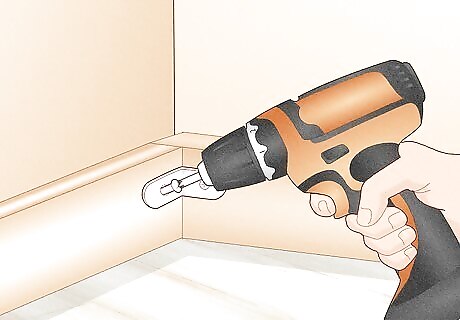
Reinforce the joints with corner brackets. Use screws to install corner brackets inside each of the joints. This will help keep the cabinet frame secure so it doesn’t wobble as you install the shelves or the face frame. Use short screws so that they don’t poke through the back of the cabinet.
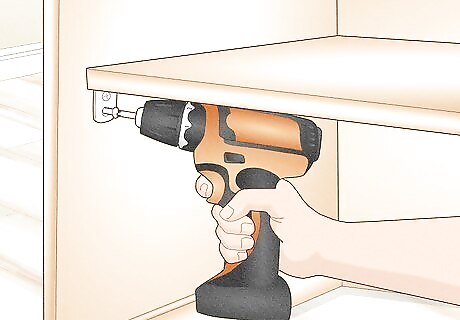
Install the shelves using corner brackets. Use 2 corner brackets per side, and install them on either side of the cabinet where you’d like the shelves to go. Slide in pieces of plywood to sit on top of the corner brackets and act as shelves. If you’re building wall cabinets, wait to install the shelves until they’re up on the wall. That way, they won’t slide out during installation.
Installing Face Panels and Doors
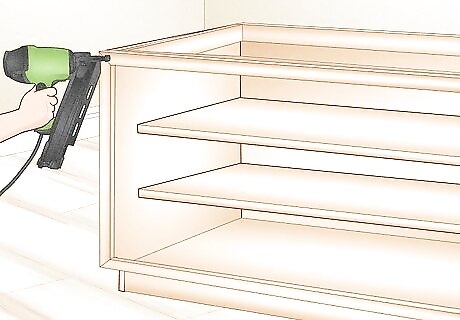
Add the facing panels. Assemble the facing panels into one unit like you would assemble a picture frame. You can use flat joints or you can miter them. You can use pocket holes, dowels, or mortise and tenon joints to join the pieces together. Nail and the countersink the nails to attach the completed face to the cabinet. The facing panels sit in front of the cabinet itself but behind the door.
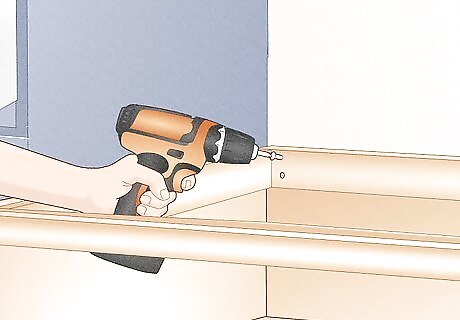
Install the cabinets in their permanent location. Screw through the back panel and into the wall studs to secure the cabinet in place. Upper cabinets may require more support, such as L brackets (than can be covered up by a backsplash), if you plan to put heavy items, like dishes, in the cabinet. It’s important to attach cabinets to studs, even if they’re sitting on the ground. Otherwise, heavy items may tip your cabinets over and away from the wall.
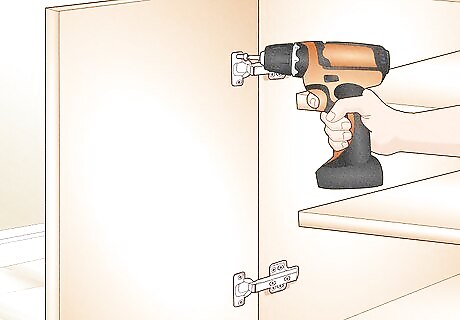
Install the doors using hinges. Buy cabinet doors and install them using the hinges that are included. Once you add the doors, give your cabinets a nice finish with some wood polish before letting them dry. You can also install drawers in your cabinets if you’d like to. However, creating drawers is a complicated process, and it’s not easy for a beginner to take on.



















Comments
0 comment